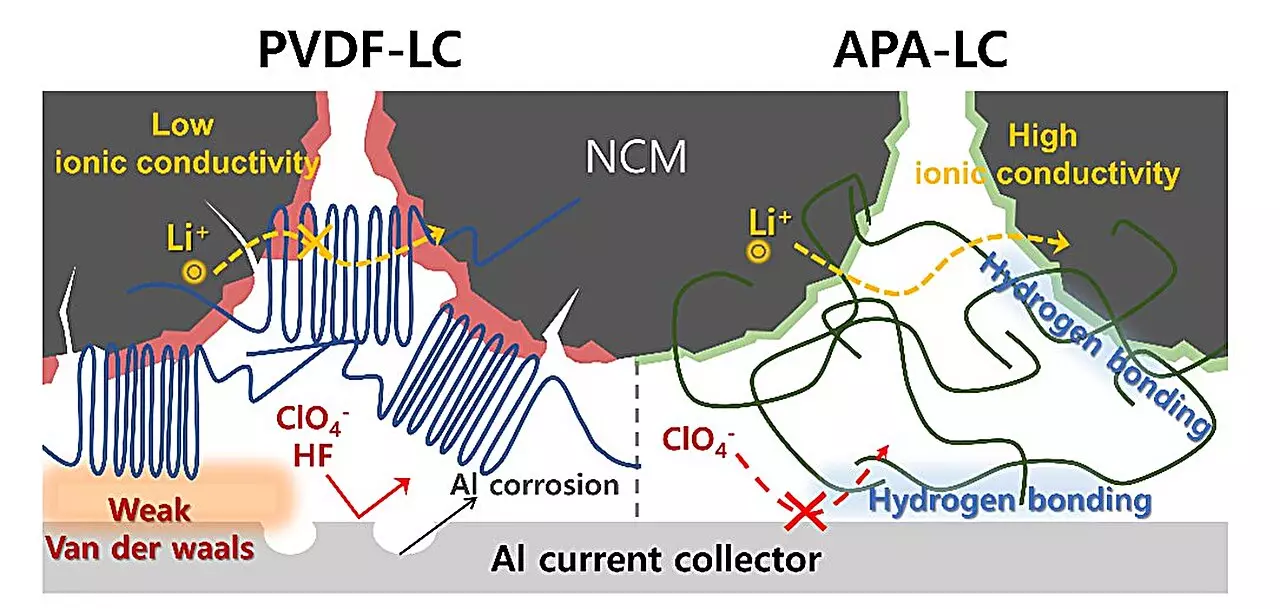In recent years, the push for sustainable energy solutions has escalated significantly, driven by urgent concerns about environmental degradation and the depletion of natural resources. Traditional battery systems, especially those reliant on lithium sources, are under scrutiny due to their environmental impact, particularly the use of harmful fluorinated compounds. As countries tighten regulations on per- and polyfluoroalkyl substances (PFAS), the demand for innovative materials that promote both battery efficiency and sustainability has never been more critical.
At the heart of traditional lithium batteries are compounds like polyvinylidene fluoride (PVDF) and lithium hexafluorophosphate (LiPF6). While effective for their intended applications, these materials pose significant environmental and health risks. The use of PVDF, for instance, is problematic because it is non-biodegradable and emits toxic substances like hydrogen fluoride (HF) during degradation, which not only affects the surrounding environment but also reduces the functional lifespan of batteries. As regulatory bodies such as the European Union aim to phase out harmful PFAS materials by 2026, battery manufacturers face pressing challenges that necessitate a shift towards safer alternatives.
In response to these growing concerns, a research team from Pohang University of Science and Technology (POSTECH) and Hansol Chemical has made a significant breakthrough by developing a fluorine-free binder and electrolyte system. Their research, recently published in the Chemical Engineering Journal, showcases the potential of a new lithium perchlorate (LiClO4) electrolyte combined with a non-fluorinated aromatic polyamide (APA) binder, effectively bypassing the environmental pitfalls associated with traditional systems.
The innovative APA-LC system promises not only compliance with evolving environmental regulations but also enhanced performance characteristics. Unlike its predecessors, this new system is devoid of fluorinated compounds, marking a critical milestone in the quest for eco-friendly battery technology.
The duo of LiClO4 and the APA binder introduces several advantages over traditional systems. The APA binder plays a crucial role in enhancing the bond between the cathode’s active material and the aluminum current collector. This not only mitigates electrode corrosion but also significantly boosts the overall lifespan and efficiency of the battery. Additionally, the LiClO4-based electrolyte is designed to promote ion migration, resulting in faster lithium diffusion and improved output performance. Remarkably, the APA-LC system reported a staggering 20% higher capacity retention after 200 charge and discharge cycles compared to conventional battery systems using the PVDF-LP framework.
These findings were demonstrated practically through the successful production of a high-capacity 1.5 Ah pouch cell, which exhibited excellent performance during rapid charge trials and maintained robust discharge capacity. The seamless scalability of this novel approach indicates its promising application in the battery industry moving forward.
The potential implications of the APA-LC battery system are profound. Professor Soojin Park of POSTECH expressed optimism, stating that their accomplishments go beyond merely removing harmful materials; they have proven that a high-performance, sustainable alternative is achievable. This innovation not only signifies a step towards environmental compliance but also advocates for broader responsibility within the battery manufacturing sector.
Moreover, as Young-Ho Yoon, Managing Director of Hansol Chemical’s Secondary Battery Materials Business highlights, addressing PFAS concerns positions them favorably in an increasingly conscientious global market projected to value KRW 1.7 trillion by 2026. This alignment with global regulatory trends underscores the importance of continued research and innovation within this field.
The emergence of the APA-LC battery system symbolizes a hopeful transition towards greener technologies, encouraging other researchers and manufactures to prioritize sustainability. As the world converges on the necessity for eco-friendly products, innovations like these not only enhance battery technology but could set the standard for future advancements. With obstacles being addressed and regulations anticipated to shape the field, the future of sustainable batteries looks promising, pushing us closer to environmentally responsible energy storage solutions. This research not only prioritizes performance and capacity but also redefines what is possible in the realm of eco-friendly energy technologies.

